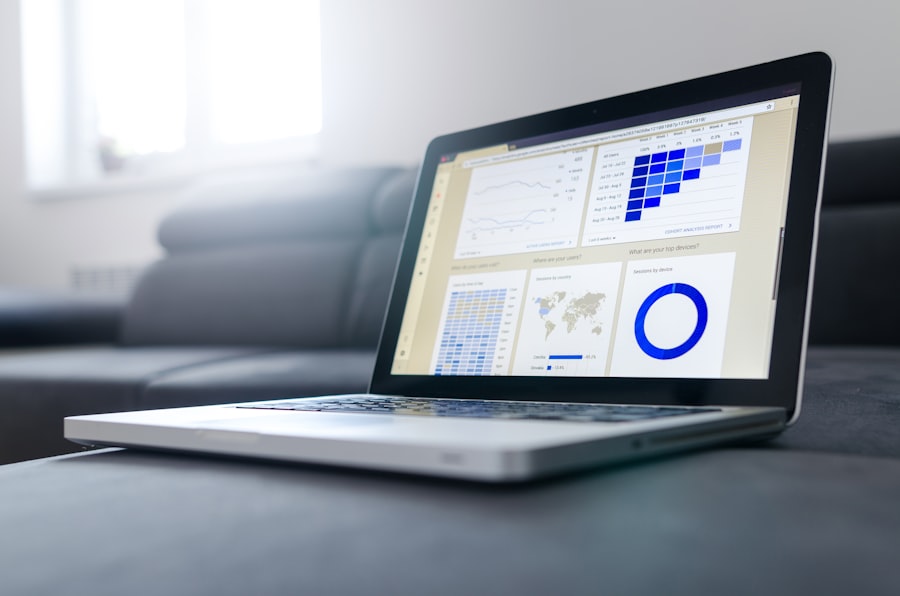Alteryx has emerged as a powerful tool in the realm of data analytics, offering seamless integration capabilities that allow users to connect various data sources effortlessly. This integration is pivotal for organizations that rely on diverse datasets to drive their decision-making processes. With Alteryx, users can pull data from multiple platforms, including cloud services, databases, and even flat files, creating a unified environment for analysis.
This capability not only enhances the efficiency of data workflows but also ensures that analysts have access to the most relevant and up-to-date information. Moreover, Alteryx’s integration features extend beyond mere data connection; they also facilitate the transformation and preparation of data for analysis. Users can leverage built-in tools to cleanse, enrich, and manipulate data as it is being integrated.
This means that analysts can spend less time on tedious data wrangling tasks and more time deriving insights that can inform strategic decisions. The ability to integrate various data sources into a single platform is a game-changer for businesses looking to harness the full potential of their data assets.
Key Takeaways
- Alteryx integration allows for seamless data connectivity and workflow automation
- Data cleansing in Alteryx is crucial for ensuring accuracy and reliability of insights
- Alteryx enables leveraging analytics for uncovering valuable data insights
- Modeling data in Alteryx facilitates predictive analysis for informed decision-making
- Alteryx streamlines data integration processes for improved efficiency and productivity
The Importance of Data Cleansing in Alteryx
Data cleansing is a critical step in the data analytics process, and Alteryx provides robust tools to ensure that the data being analyzed is accurate and reliable. In any analytical endeavor, the quality of the data directly impacts the quality of the insights derived from it. Poorly maintAIned or erroneous data can lead to misguided conclusions, which can have significant repercussions for businesses.
Alteryx addresses this challenge by offering a suite of cleansing tools that allow users to identify and rectify issues such as duplicates, missing values, and inconsistencies. The importance of data cleansing in Alteryx cannot be overstated. By employing these tools, organizations can enhance the integrity of their datasets, leading to more trustworthy analyses.
For instance, Alteryx allows users to apply filters and conditions to identify outliers or anomalies in their data. This proactive approach not only improves the overall quality of the dataset but also empowers analysts to make informed decisions based on reliable information. In an era where data-driven decision-making is paramount, ensuring data quality through effective cleansing processes is essential for any organization aiming to stay competitive.
Leveraging Analytics in Alteryx for Data Insights

Alteryx stands out as a comprehensive analytics platform that enables users to extract meaningful insights from their data with ease. The platform’s user-friendly interface allows analysts to perform complex analyses without requiring extensive programming knowledge. By leveraging Alteryx’s analytics capabilities, organizations can uncover trends, patterns, and correlations within their datasets that may not be immediately apparent.
This ability to visualize and interpret data effectively is crucial for making informed business decisions. One of the key features of Alteryx is its ability to perform predictive analytics, which allows users to forecast future trends based on historical data. By utilizing statistical models and machine learning algorithms integrated within the platform, analysts can generate actionable insights that drive strategic initiatives.
For example, businesses can predict customer behavior, optimize marketing campaigns, or enhance operational efficiency by analyzing past performance metrics. The power of analytics in Alteryx not only streamlines the decision-making process but also fosters a culture of data-driven innovation within organizations.
Modeling Data with Alteryx for Predictive Analysis
| Data | Metric |
|---|---|
| Number of Records | 100,000 |
| Number of Variables | 20 |
| Missing Values | 5% |
| Outliers | 2% |
| Model Accuracy | 85% |
Modeling data is a cornerstone of predictive analysis, and Alteryx excels in providing users with the tools necessary to build robust models that yield accurate forecasts. The platform supports a variety of modeling techniques, including regression analysis, decision trees, and clustering algorithms. This versatility allows analysts to choose the most appropriate method based on the specific characteristics of their datasets and the questions they seek to answer.
In addition to its modeling capabilities, Alteryx offers an intuitive workflow design that simplifies the process of building and validating models. Users can easily visualize their modeling steps, making it straightforward to iterate and refine their approaches as needed. This iterative process is essential for achieving optimal results in predictive analysis.
Furthermore, Alteryx’s integration with R and Python enables advanced users to incorporate custom scripts into their workflows, enhancing the modeling capabilities even further.
Streamlining Data Integration Processes with Alteryx
The ability to streamline data integration processes is one of Alteryx’s standout features, making it an invaluable tool for organizations dealing with large volumes of data from disparate sources. Traditional methods of data integration often involve cumbersome manual processes that are not only time-consuming but also prone to errors. Alteryx addresses these challenges by automating many aspects of data integration, allowing users to focus on analysis rather than data preparation.
With Alteryx’s drag-and-drop interface, users can easily create workflows that connect various data sources and perform necessary transformations in real-time. This automation not only accelerates the integration process but also enhances collaboration among team members who may be working with different datasets. Additionally, Alteryx’s ability to handle both structured and unstructured data means that organizations can integrate a wider range of information into their analyses.
As a result, businesses can achieve a more holistic view of their operations and make more informed decisions based on comprehensive datasets.
Best Practices for Data Cleansing in Alteryx

Implementing best practices for data cleansing in Alteryx is essential for maximizing the effectiveness of analytical efforts. One key practice is to establish a clear understanding of the data being analyzed before initiating cleansing processes. Analysts should familiarize themselves with the source of the data, its structure, and any potential issues that may arise during analysis.
This foundational knowledge enables users to tailor their cleansing strategies effectively. Another best practice involves leveraging Alteryx’s built-in tools for profiling and validating data quality. By utilizing these features early in the workflow, analysts can identify potential issues such as missing values or inconsistencies before they impact subsequent analyses.
By keeping track of the steps taken during cleansing, organizations can create a reference point for future analyses and facilitate collaboration among team members.
Advanced Analytics Techniques in Alteryx
Alteryx offers a rich array of advanced analytics techniques that empower users to delve deeper into their datasets and extract valuable insights. Among these techniques are spatial analytics, which allows organizations to analyze geographic data and uncover location-based trends. This capability is particularly beneficial for businesses looking to optimize logistics, enhance customer targeting, or assess market opportunities based on geographic factors.
Furthermore, Alteryx supports time series analysis, enabling users to examine temporal patterns within their datasets. This technique is invaluable for forecasting future trends based on historical performance metrics. By combining advanced analytics techniques with user-friendly workflows, Alteryx democratizes access to sophisticated analytical capabilities, allowing even non-technical users to harness the power of advanced analytics in their decision-making processes.
Harnessing the Power of Modeling in Alteryx for Business Insights
The power of modeling in Alteryx extends beyond mere statistical analysis; it serves as a catalyst for driving business insights that inform strategic initiatives. By employing various modeling techniques within the platform, organizations can gain a deeper understanding of their operations and customer behavior. For instance, predictive models can help businesses identify high-value customers or forecast sales trends based on historical purchasing patterns.
Moreover, Alteryx’s modeling capabilities enable organizations to conduct scenario analysis, allowing them to evaluate potential outcomes based on different variables or assumptions. This flexibility is crucial for businesses operating in dynamic environments where market conditions can change rapidly. By harnessing the power of modeling in Alteryx, organizations can make informed decisions that align with their strategic goals while remaining agile in response to evolving market dynamics.
In conclusion, Alteryx stands out as a comprehensive solution for organizations seeking to enhance their data analytics capabilities through effective integration, cleansing, modeling, and advanced analytics techniques. By leveraging these features, businesses can unlock valuable insights from their datasets and drive informed decision-making processes that foster growth and innovation in an increasingly competitive landscape.
For those interested in exploring the intersection of advanced data analytics and emerging digital environments, the article on future trends and innovations in the metaverse industry offers a compelling read. While it does not directly discuss Alteryx, it delves into the broader context of technological advancements, including data integration, predictive analytics, and data modeling within the rapidly evolving metaverse ecosystems. This article provides valuable insights into how these technologies could be pivotal in shaping the future of digital interactions and experiences in the metaverse, making it a relevant resource for those interested in the technological synergy between analytics and virtual environments.
FAQs
What is Alteryx?
Alteryx is a data analytics platform that provides tools for data integration, data cleansing, analytical workflows, predictive analytics, and data modeling.
What are the key features of Alteryx?
Key features of Alteryx include data blending, spatial analytics, predictive analytics, and the ability to create and share analytical workflows.
What is data integration and data cleansing in Alteryx?
Data integration in Alteryx refers to the process of combining data from different sources into a single, unified view. Data cleansing involves identifying and correcting errors or inconsistencies in the data to improve its quality.
What are analytical workflows in Alteryx?
Analytical workflows in Alteryx are sequences of data preparation, blending, and analysis steps that can be automated and repeated to gain insights from data.
What is predictive analytics in Alteryx?
Predictive analytics in Alteryx involves using statistical algorithms and machine learning techniques to forecast future trends, behaviors, and outcomes based on historical data.
What is data modeling in Alteryx?
Data modeling in Alteryx involves creating visual representations of data structures and relationships to help understand and analyze complex datasets.











Leave a Reply